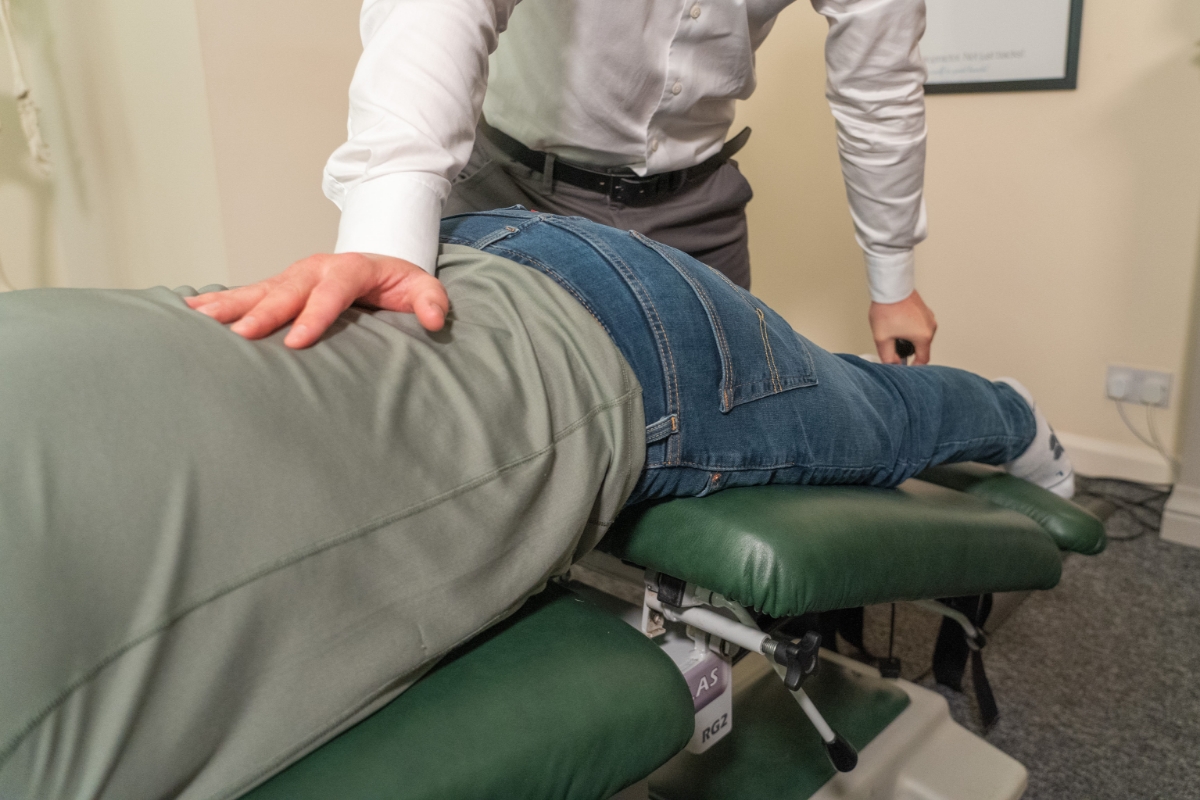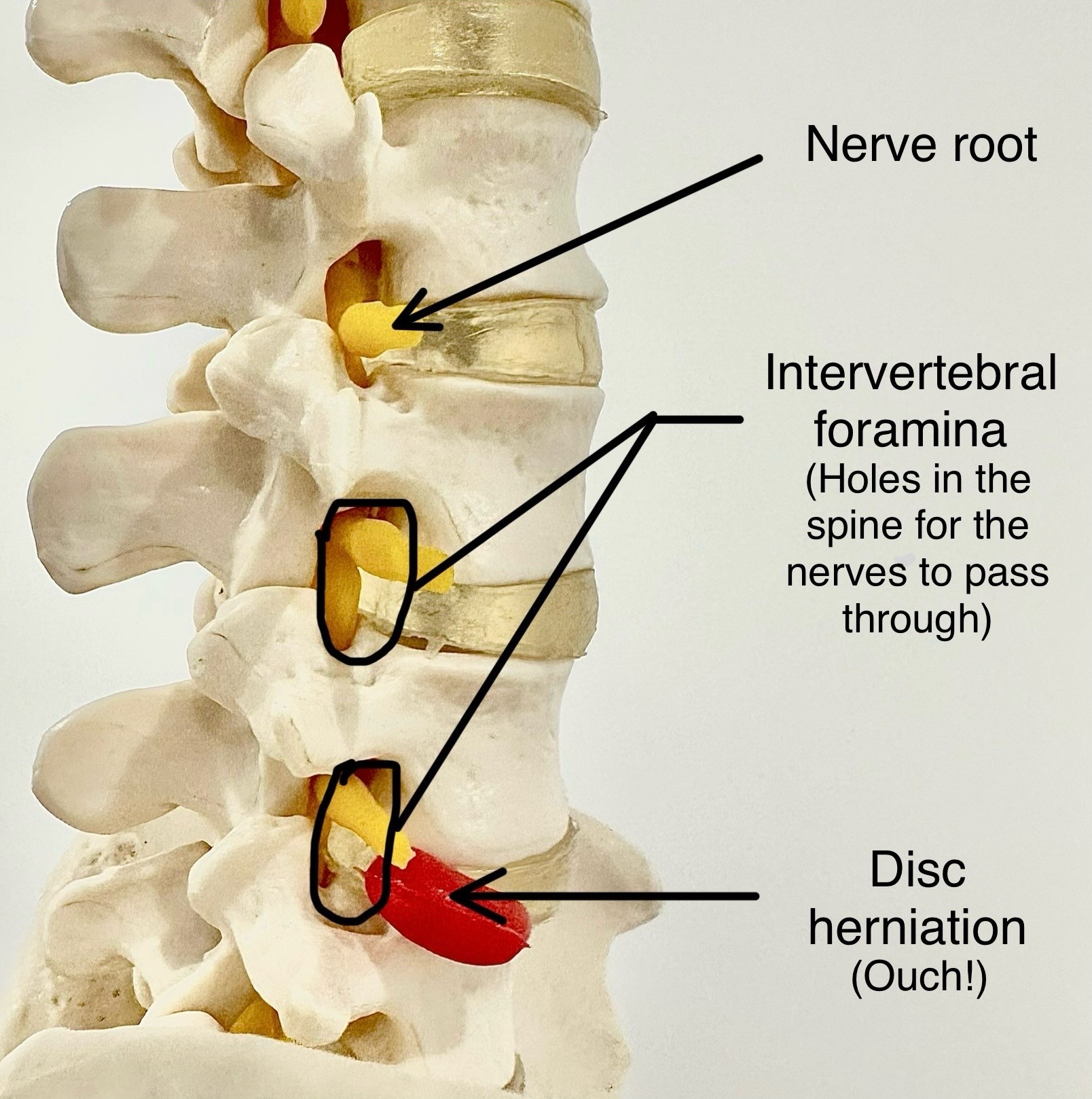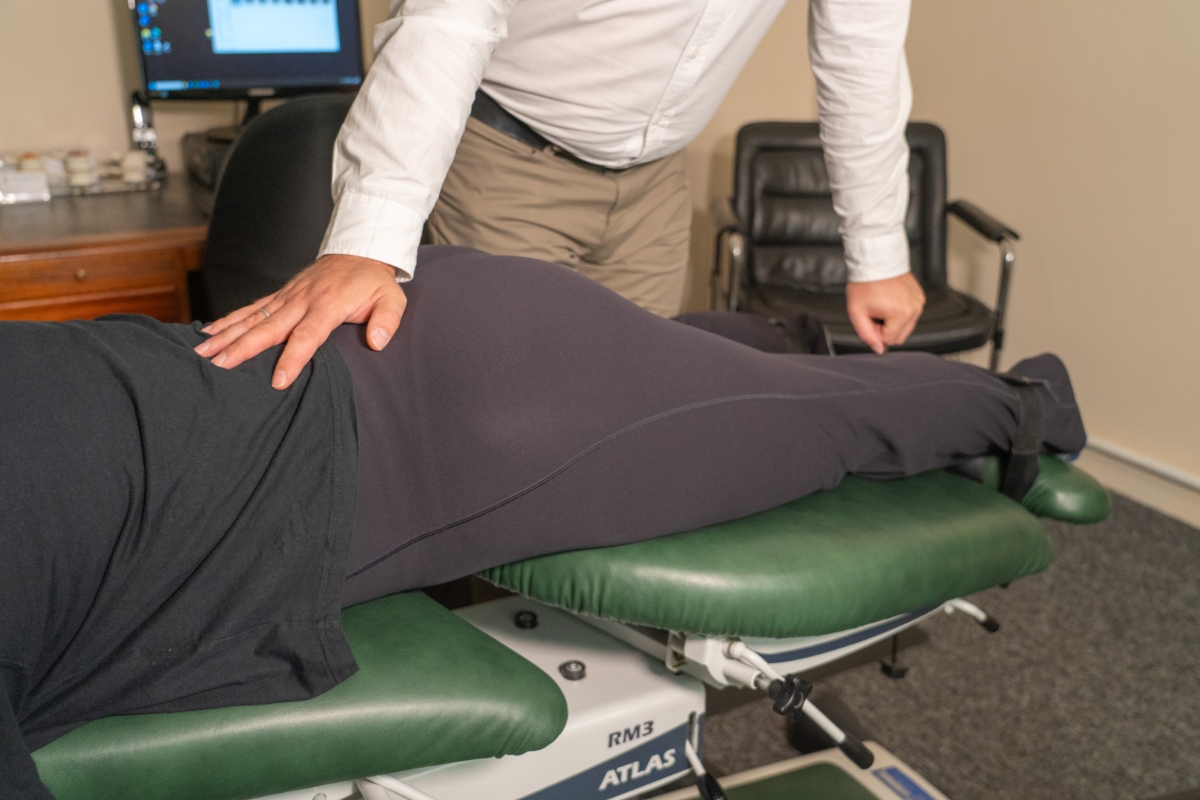Here you can see Matt demonstrate a technique called flexion-distraction, which can be particularly useful for lower back spinal disc and/or nerve problems.

Flexion-distraction therapy: A gentle path to spinal relief
Flexion-distraction is a specialised chiropractic technique designed to alleviate spinal discomfort, restore joint mobility, and support the body’s natural healing process. At our clinic, we have seen firsthand how this gentle, non-invasive approach can ease conditions that don’t always respond to traditional manipulations. Whether you’re coping with herniated discs, chronic low back pain, or sciatica, flexion-distraction may be the missing piece in your care plan.
What Is flexion-distraction?
Flexion-distraction therapy uses a specially designed table that rhythmically stretches and releases segments of your spine. Unlike high-velocity adjustments, this method combines two movements in tandem:
- Flexion: The targeted spinal segment is gently bent forward.
- Distraction: The vertebrae are slightly pulled apart, stretching the disc axially, creating space in the spinal joints and discs.
This controlled, repetitive motion is designed to encourage reduction of disc bulges and/or disc herniations. This movement also opens the intervertebral foramina, aiming to reduce pressure on nerve roots —all without any cracking sensations.
All three of our treatment rooms have this specialist treatment facility available.
Who can benefit?
While flexion-distraction is particularly effective for disc-related issues, its benefits could extend to a broad range of patients:
- Herniated or bulging discs. Find out more
- Degenerative disc disease. Find out more
- Sciatica or radiating leg pain. Find out more
- Facet joint irritation. Find out more
- Chronic low back stiffness. Find out more
- Post-surgical spinal stiffness
- A gentler alternative to traditional chiropractic manipulation
Because the technique is low-force and highly customisable, it is also often suitable for older adults, and anyone hesitant about traditional manual manipulations.
How treatment works:
-
- Comprehensive evaluation We begin with a detailed history, postural analysis, and range-of-motion testing. If needed, we can refer for digital imaging to assess for disc bulges or degeneration.
- Customised table settings Your chiropractor sets the table to your height and comfort level. Padded sections cradle your pelvis while movable sections support your torso and legs.
- Gentle rhythmic motion During the session, you lie face down. The chiropractor applies a gentle, steady pull while guiding the spinal segment through flexion. Most patients describe the sensation as a slow, soothing stretch.
- Ongoing assessment Throughout treatment, your feedback on pressure and comfort guides the force and angle of distraction.

Objectives of flexion-distraction
- Disc decompression: To alleviate bulges and herniations by creating negative pressure within the disc space.
- Reduced nerve irritation: By opening the intervertebral foramina, reducing pressure on nerves.
- Enhanced mobility: To Restore joint range of motion without overstressing the muscles or ligaments.
- Pain relief: Many patients report a decrease in pain intensity after just a few sessions.
- Non-invasive: No needles, no medications, no surgery—just targeted mechanical therapy.

Integrating flexion-distraction with your care plan
We find flexion-distraction works best as part of a holistic chiropractic approach. We may combine it with:
- Spinal manipulations designed to address restrictions or misalignments above and below the treatment zone
- Soft tissue therapies (trigger point technique , vibration massage )
- Core-strengthening and flexibility exercises
- Postural and ergonomic guidance -aiming to prevent recurrence
What to expect after treatment
Most patients experience a sense of lightness in their spine and a reduction in radiating discomfort. Mild soreness can occur—like the feeling after a good stretch—and usually subsides within 24 hours. To maximise results, we recommend at-home stretches, ice/heat protocols, and ergonomic tips tailored to your lifestyle.
Get in touch
Ready to explore a gentler route to spinal health?
At Acomb Chiropractic Clinic, we are committed to helping you if we can. If you suspect that your discomfort may be helped by flexion-distraction, we encourage you to contact us for a personalised consultation. Our experienced chiropractic team will conduct a thorough assessment, explain our findings and what we think is possible in clear terms. If appropriate, we will develop a personalised treatment plan tailored to your specific condition and goals, aiming to maximise your possible benefit.
Not all complaints are suitable for chiropractic care or a specific treatment technique: If we think we cannot help your complaint, or you require more investigations, we will do our best to support you in finding you another path forward.
